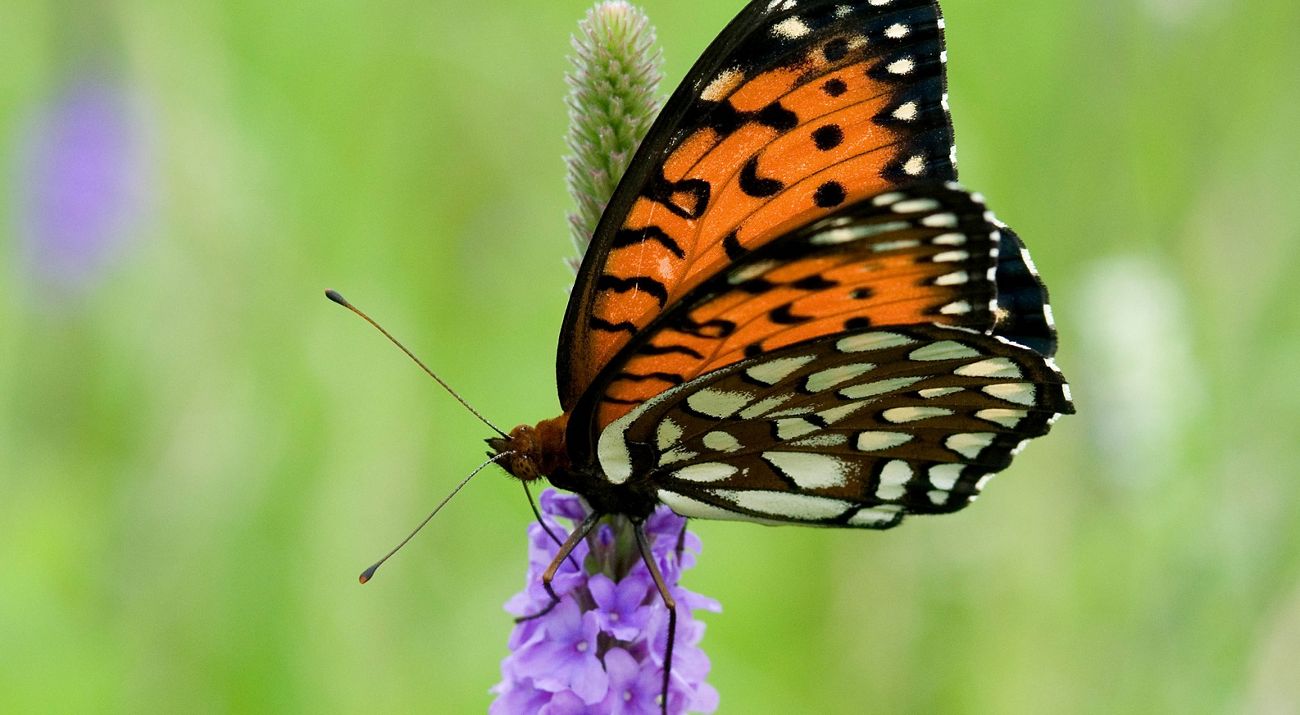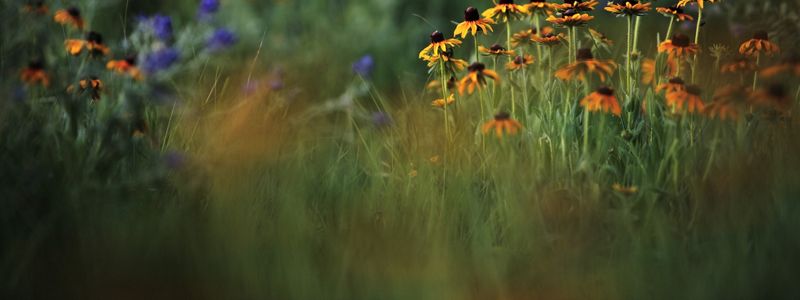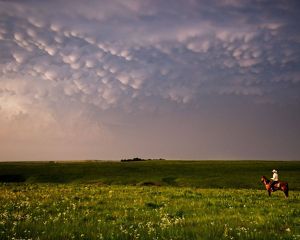Summer Seed Collection at Tallgrass Prairie National Preserve Helps Endangered Butterfly
Supporting the Regal fritillary Through Native Seed Collection and Prairie Restoration

In June, the Tallgrass Prairie National Preserve hosted a seed collection day dedicated to violets. Restoring previously tilled lands to their original state—in this case lowland prairie—takes time, resources and careful planning. The collection of local seed is an essential part of this process, as it is better adapted to our climate than commercially available alternatives.
Why Violets?
Violets serve as the sole larval host for fritillary butterflies. When we collect and then plant seeds, it creates more caterpillar food!
Fascinatingly, the female butterflies seem to find violets even after they have wilted and blown away; it’s possible they can smell the root. In late summer, female butterflies lay thousands of eggs in areas where violets should, would or could be.
Those eggs transform over winter and emerge as baby caterpillars right alongside the baby violets, which serve as a fresh meal to help their growth.
Regal Fritillary Butterfly Listed as Endangered
The regal fritillary is a large brush-footed butterfly with bright orange forewings and black spots. Known for its bold coloring, this pollinator is found in remnant tallgrass prairie, like that at the preserve, and all across the Great Plains and eastern United States.
Habitat alteration, including loss of areas to live and grow during critical lifecycle stages, and reduction of specific nutrient plants like violets, has reduced their range and abundance. Viable populations require a large number of violet plants.
In 2024, the regal fritillary was listed as endangered – but restoration efforts like our violet seed collection helps!
Species Spotted at Marvin Schwilling Memorial Butterfly Count
Preserve staff and researchers recently completed another year of data collection for the annual Marvin Schwilling Memorial Butterfly count at the Tallgrass Prairie National Preserve and nearby Chase State Fishing Lake.
Over 1,858 butterflies across 47 species were counted, including the endangered regal fritillary, American snout, gray copper and pearl crescents. This long-term census provides insight into species occurrence and distribution in the Flint Hills and is named in honor of influential Kansas biologist and naturalist, Marvin Schwilling.
Upcoming Seed Collection Opportunities
Saturday, September 27, 2025
Saturday, October 25, 2025
Native seed collection events are hosted in partnership with our friends at the National Park Service. To learn more, visit Volunteer in Kansas!
Stay in the Know!
Sign up to receive monthly conservation news and updates from Kansas. Get a preview of Kansas' Nature News email.

Stand Up For Nature
The mission of The Nature Conservancy is to conserve the lands and waters on which all life depends. For more than 30 years, we’ve worked in Kansas to do just that. We've permanently protected 161,000 acres across the state, including six preserves that are open to the public.


